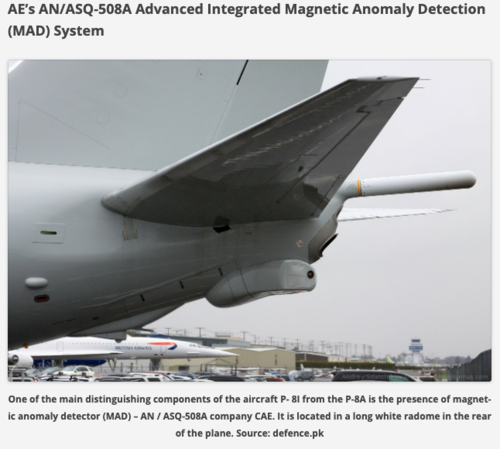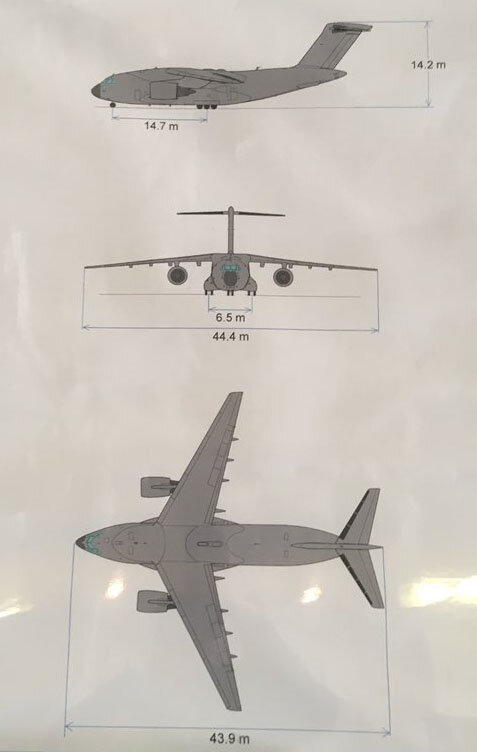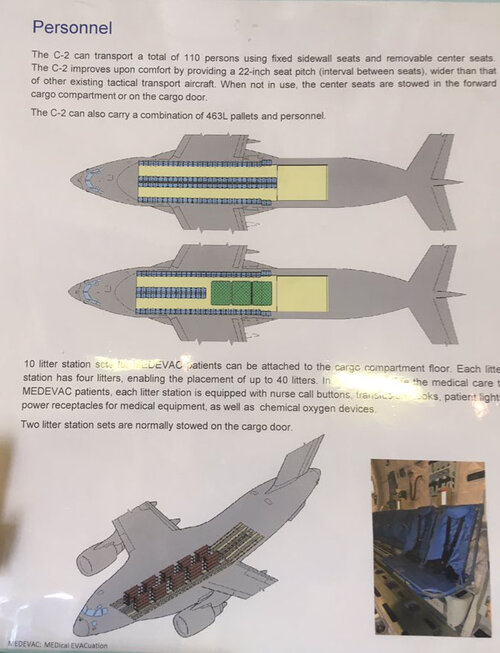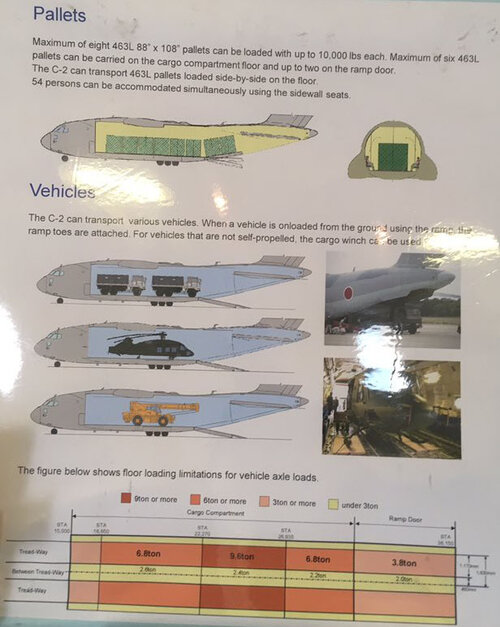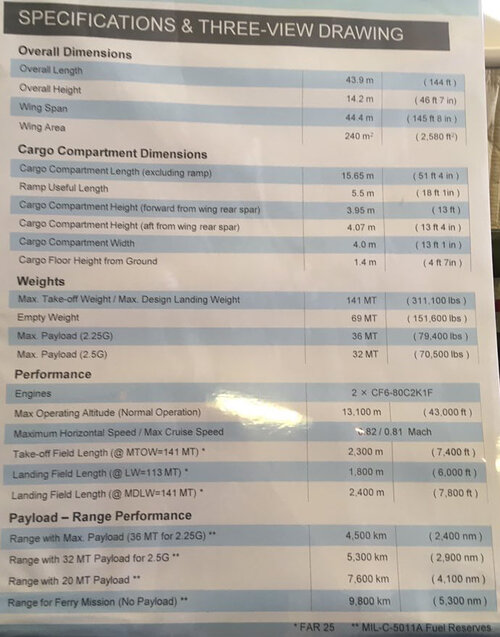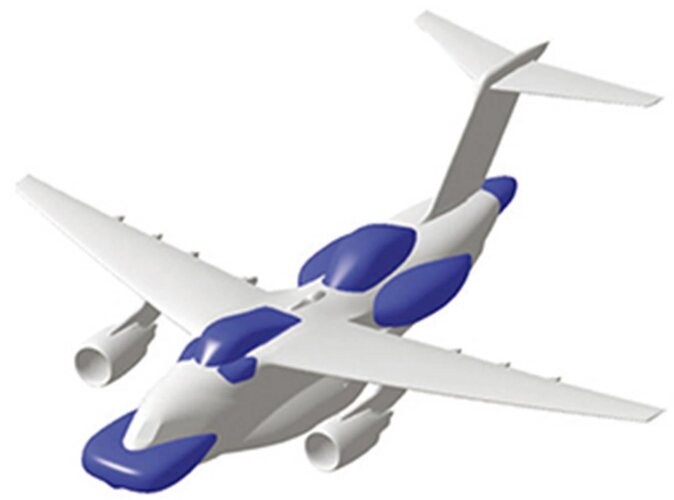You are using an out of date browser. It may not display this or other websites correctly.
You should upgrade or use an alternative browser.
You should upgrade or use an alternative browser.
Kawasaki P-X (P-1) and C-X (C-2)
- Thread starter overscan (PaulMM)
- Start date
marauder2048
"I should really just relax"
- Joined
- 19 November 2013
- Messages
- 3,157
- Reaction score
- 911
More than likely a cover for the fact that the German MOD is highly unlikely to receive the funding to buy them any time soon.
I mean this is the same MOD that thinks they can get the non nuclear-capable Super Hornet to nuclear certified status in 5 years.
- Joined
- 9 October 2009
- Messages
- 21,129
- Reaction score
- 12,215
True. I rather suspect that Germany has just about run out of time, not to mention the rest of the western powers.
apparition13
I really should change my personal text
- Joined
- 27 January 2017
- Messages
- 533
- Reaction score
- 953
What "type certification" are they talking about? It's been operational in Japan for 7 years. Why would it take 5 years to get certified?
- Joined
- 29 November 2010
- Messages
- 1,730
- Reaction score
- 3,363
You know, I really, really, really, like these aircraft, I'd rate both as first in their class, but I get the feeling that in 20 years people on this site will be talking about "what might have been" where they are concerned. Same goes for the Shinmeywa US-2.
indeed what could have been

and since we're at it, in UK colors

FighterJock
ACCESS: Top Secret
- Joined
- 29 October 2007
- Messages
- 4,942
- Reaction score
- 4,738
You know, I really, really, really, like these aircraft, I'd rate both as first in their class, but I get the feeling that in 20 years people on this site will be talking about "what might have been" where they are concerned. Same goes for the Shinmeywa US-2.
indeed what could have been

and since we're at it, in UK colors

I wish that the U.K. Government could have bought some P-1s to compliment the P-8 force, as the P-1 features technology that the P-8 does not have.
marauder2048
"I should really just relax"
- Joined
- 19 November 2013
- Messages
- 3,157
- Reaction score
- 911
What "type certification" are they talking about? It's been operational in Japan for 7 years. Why would it take 5 years to get certified?
Probably EASA/ICAO military certification.
- Joined
- 29 November 2010
- Messages
- 1,730
- Reaction score
- 3,363
I wish that the U.K. Government could have bought some P-1s to compliment the P-8 force, as the P-1 features technology that the P-8 does not have.
interesting. could you explain a bit more on those features?
FighterJock
ACCESS: Top Secret
- Joined
- 29 October 2007
- Messages
- 4,942
- Reaction score
- 4,738
I wish that the U.K. Government could have bought some P-1s to compliment the P-8 force, as the P-1 features technology that the P-8 does not have.
interesting. could you explain a bit more on those features?
The Naval Technology Kawasaki P-1 page does a better job at explaining the technology than I ever could.

Kawasaki XP-1 Maritime Patrol Aircraft
Kawasaki XP-1 (previously known as P-X) is a maritime patrol aircraft being developed by Kawasaki Heavy Industries for the Japan…
- Joined
- 6 September 2006
- Messages
- 4,596
- Reaction score
- 8,553
From what I understood export P-1s would have quite different non-Japanese avionics and equipment (90% of the components are indigenous), so presumably they would essentially be re-certificating all the non-structural elements all over again. Not cheap and not easy or quick to do.
Japan just isn't geared up for easy military exports. It faces the problem of bespoke Japanese kit no-one else wants (limited spares and technical support) and bits of US-kit it can't re-export without approval from Washington. Until it can overcome these, talk of Japanese military aircraft exports is highly optimistic and premature. Even Japanese civilian export sales are weak.
No doubt the P-1 is a fine MPA, but unless you can build a product nations can buy easily and affordably, its always going to be niche. Presumably Berlin doesn't want to be left holding the bag and trying to amortise the cost of changing up to 90% of the systems on the aircraft. Given the UK, France, New Zealand and Norway already walked away, the omens for a sale are not good.
Japan just isn't geared up for easy military exports. It faces the problem of bespoke Japanese kit no-one else wants (limited spares and technical support) and bits of US-kit it can't re-export without approval from Washington. Until it can overcome these, talk of Japanese military aircraft exports is highly optimistic and premature. Even Japanese civilian export sales are weak.
No doubt the P-1 is a fine MPA, but unless you can build a product nations can buy easily and affordably, its always going to be niche. Presumably Berlin doesn't want to be left holding the bag and trying to amortise the cost of changing up to 90% of the systems on the aircraft. Given the UK, France, New Zealand and Norway already walked away, the omens for a sale are not good.
apparition13
I really should change my personal text
- Joined
- 27 January 2017
- Messages
- 533
- Reaction score
- 953
That makes no sense to me. If I'm buying a P-1 (and I absolutely would over the P-8), all I want changed is the displays, from Japanese to English (or German, or whatever). I presume P-8s aren't being re-avioniced, why do it with P-1s? You lose the advantage of not having to do the R&D and development by buying an off the shelf product. If that's the case, why are you buying from someone else in the first place? Especially if it's meant to be an interim aircraft to cover for aircraft that are ageing out while you develop something new. Getting it in service quickly seems to be a priority at that point, so just take what's there. Otherwise it's just B-57* for the umpteenth time. If you need something quickly then take whatever is out there that comes closest to what you want and make do.
*It's 1950 and the Korean war just started, and we need a night interdictor. Canberra looks good, but rather than just buy them we will have a competition, and then do a whole lot of modifications and oops, the war is over before they get into service. So all those troops that needed the support of a night interdictor didnt' get it. See also a new CAS aircraft for Vietnam.
*It's 1950 and the Korean war just started, and we need a night interdictor. Canberra looks good, but rather than just buy them we will have a competition, and then do a whole lot of modifications and oops, the war is over before they get into service. So all those troops that needed the support of a night interdictor didnt' get it. See also a new CAS aircraft for Vietnam.
Still not getting any indication of why a P-1 is any better than a P-8...I wish that the U.K. Government could have bought some P-1s to compliment the P-8 force, as the P-1 features technology that the P-8 does not have.
interesting. could you explain a bit more on those features?
The Naval Technology Kawasaki P-1 page does a better job at explaining the technology than I ever could.

Kawasaki XP-1 Maritime Patrol Aircraft
Kawasaki XP-1 (previously known as P-X) is a maritime patrol aircraft being developed by Kawasaki Heavy Industries for the Japan…www.naval-technology.com
apparition13
I really should change my personal text
- Joined
- 27 January 2017
- Messages
- 533
- Reaction score
- 953
P-1 is a clean sheet ASW design, P-8 is an airliner.Still not getting any indication of why a P-1 is any better than a P-8...
P-8 has to operate at altitude since it is an airliner. It required the development of entirely new ASW tactics since it can't do low and slow search unassisted by drones, and new torpedoes and sonobuoys for high altitude drop. P-1 can do low and slow, but it can also operate at altitude. You can choose tactics to fit the situation.
P-1 has an AESA that can do both surface and air search. P-8 doesn't have a built in AESA, but it has surface search AESA pod that can also be over both land and sea. It doesn't have the air search capability the P-1 has; as far as I know the P-1 doesn't have the land search capability the P-8 has with the pod.
P-1 has a MAD boom. P-8 needs a drone to do a MAD search.
P-1 has 4 engines. It can continue the mission with 3, it can shut two down and cruise on two to increase range. P-8 has two, loss of one is a mission kill.
P-1 has longer range.
P-1 has a bigger bomb bay (8 vs. 5 stations), and more pylons (16 vs. 11). The total payload is similar.
P-1 is more maneuverable, and from what I've seen of their demos it appears to need less runway for takeoff and landing.
P-1 is the first fly by light production aircraft. Which may reduce interference with the sensors.
P-1 is prettier.
Clean sheet is the main thing, since it means the airframe and systems are optimized for the mission. Even things like the fact it has massive cockpit windows to facilitate visual search (which also improves visibility around the airfield) are because of the optimized design. For me personally, it's the ability to do low and slow as well as high altitude that carries the most weight. The P-8's compromised airframe closes off access to decades of tactical ASW practice and experience because it can't do low and slow. I think that's a deal-breaker.
marauder2048
"I should really just relax"
- Joined
- 19 November 2013
- Messages
- 3,157
- Reaction score
- 911
Just a minor correction, already added some pages before, the 737 airframe has been completly re-designed for the P-8 with a stronger structure, added wing spars and thicker skin (wing & fuselage). It can manoeuvre harder and better than the classic 737 thanks to new FBW.
Also, India does use their P-8 "low and slow" with a new generation MAD sensor.
Edit:
@marauder2048 beat me on the line. Great pic b/w.
Also, India does use their P-8 "low and slow" with a new generation MAD sensor.
Edit:
@marauder2048 beat me on the line. Great pic b/w.
- Joined
- 9 October 2009
- Messages
- 21,129
- Reaction score
- 12,215
That MAD system is only fitted on the P-8I, and is not yet operational.
- Joined
- 4 July 2010
- Messages
- 2,397
- Reaction score
- 2,701
Do you have a source for the claim that AN/ASQ-508A is not operational? Because CAE and Naval Air Arm are saying it is.That MAD system is only fitted on the P-8I, and is not yet operational.
FighterJock
ACCESS: Top Secret
- Joined
- 29 October 2007
- Messages
- 4,942
- Reaction score
- 4,738
One thing I find puzzling about the RAF acquiring the P-8 is that why didn’t the RAF follow India and get the MAD tail boom fitted as well? Was it operational requirements?
- Joined
- 16 April 2008
- Messages
- 9,008
- Reaction score
- 12,686
I'd argue it wasn't the change of aircraft that forced the emphasis on high-level tactics, but rather the desire to adopt new tactics that let to the change in aircraft. This wasn't a case where they had no other option. LM had Orion 21 on offer, and the USN could have written requirements to favor wavetop sub hunting but opted not to. Too much time doing overland ISR in GWOT? Or a realization that there are new ways to do the MARPAT mission?
When you look at how the P-8 actually gets used, they are doing the low-level when needed ("rigging" ships, for example) and doing it effectively. The fact that the customers aren't demanding MAD suggests they don't think it's terribly important for their use cases. As the Indian P-8I shows, the US and British aircraft could easily have MAD if the capability was considered mission-essential. Keep in mind that the US usage of MPA these days it at least as much for wide-area surveillance as for pinpoint sub hunting. Which is why things like the LSRS/AAS radars are especially useful but maybe MAD is not. (BTW, AAS offers a mast and periscope detection mode, so it has some pretty obvious ASW application.)
When you look at how the P-8 actually gets used, they are doing the low-level when needed ("rigging" ships, for example) and doing it effectively. The fact that the customers aren't demanding MAD suggests they don't think it's terribly important for their use cases. As the Indian P-8I shows, the US and British aircraft could easily have MAD if the capability was considered mission-essential. Keep in mind that the US usage of MPA these days it at least as much for wide-area surveillance as for pinpoint sub hunting. Which is why things like the LSRS/AAS radars are especially useful but maybe MAD is not. (BTW, AAS offers a mast and periscope detection mode, so it has some pretty obvious ASW application.)
Comments in response in green bold
P-1 is a clean sheet ASW design, P-8 is an airliner. So what. The P-3 was based on the Electra and has done sterling service for decades. I challenge anyone to point out any real compromises created by taking the 737 derivative route.Still not getting any indication of why a P-1 is any better than a P-8...
P-8 has to operate at altitude since it is an airliner. Rubbish! The change was driven just as much by changed concepts of operation - do you really think Boeing just designed a platform without input from potential end users? It required the development of entirely new ASW tactics since it can't do low and slow search unassisted by drones, and new torpedoes and sonobuoys for high altitude drop. P-1 can do low and slow, but it can also operate at altitude. You can choose tactics to fit the situation.
P-1 has an AESA that can do both surface and air search. P-8 doesn't have a built in AESA, but it has surface search AESA pod that can also be over both land and sea. It doesn't have the air search capability the P-1 has And is Air Search really a requirement for a MPA?; as far as I know the P-1 doesn't have the land search capability the P-8 has with the pod.
P-1 has a MAD boom. P-8 needs a drone to do a MAD search. The P-8 can be fitted with a MAD though interestingly, only the Indians seem to want it. Why is that I wonder...coming back to the Operators driving the CONOPS...
P-1 has 4 engines. It can continue the mission with 3, it can shut two down and cruise on two to increase range. P-8 has two, loss of one is a mission kill. And the reliability of CFM56s is...? Based upon how many decades of operations...?
P-1 has longer range. Really? Based on what? The _8 can do aerial refuelling if need be - can the P-1? And anyway, crew endurance really becomes the more pertinent measure here...
P-1 has a bigger bomb bay (8 vs. 5 stations), and more pylons (16 vs. 11). The total payload is similar. And how often do you think MPAs are really loaded for bear?
P-1 is more maneuverable, and from what I've seen of their demos it appears to need less runway for takeoff and landing. Subjective and not necessarily accurate nor necessarily even a meaningful need - nobody is going to be loping MPAs or dogfighting or otherwise...
P-1 is the first fly by light production aircraft. So what. Which may reduce interference with the sensors. May. And yet, I don't see this being a major consideration anywhere else with combat aircraft - why is that I wonder...?
P-1 is prettier.It looks more like a military aircraft. P-8 is just another boring 737. Purely subjective (I actually find the P-1 uglier). That said, if this is your driving consideration than go for it.
Clean sheet is the main thing, since it means the airframe and systems are optimized for the mission. Even things like the fact it has massive cockpit windows to facilitate visual search (which also improves visibility around the airfield) are because of the optimized design. For me personally, it's the ability to do low and slow as well as high altitude that carries the most weight. The P-8's compromised airframe closes off access to decades of tactical ASW practice and experience because it can't do low and slow. I think that's a deal-breaker. Sounds like someone trying to justify a position based on a lot of subjective points and trying to think that the solution of the past (e.g. P-3s and its ilk) is the only solution for the future. a bit like those who argue CAS can only be done by an A-10 with a gun. It also seems to think that real world operators had nothing to do with the development of the CONOPS or the solution inherent in the P-8. At the end of the day, I wonder who got it right in the eyes of operators: P-8 (176 either delivered or on order with 7 air forces) or P-1 (60 produced and only in service with 1 air force)...hmmm
Probably because they decided it wasn't needed anymore.One thing I find puzzling about the RAF acquiring the P-8 is that why didn’t the RAF follow India and get the MAD tail boom fitted as well? Was it operational requirements?
P-1 has a MAD boom. P-8 needs a drone to do a MAD search.Still not getting any indication of why a P-1 is any better than a P-8...
View attachment 640844
Funny how the operators of the P-8, other than India all seem to not care...I wonder why? Probably because they know more...
- Joined
- 16 April 2008
- Messages
- 9,008
- Reaction score
- 12,686
Moreover, I would not be surprised to hear that MAD sensors have migrated to space.
I would. It's hard enough to do effective MAD localization at hundreds of feet, much less hundreds of miles.
marauder2048
"I should really just relax"
- Joined
- 19 November 2013
- Messages
- 3,157
- Reaction score
- 911
Atomic vapor magnetometers, which are on par with SQUIDs, are $10k each. Cheap enough to be expendable.
And probably better to have your drone down and dirty especially if submariners start getting cute with SAMs.
Wacking your MPA and its highly trained, hard to replace human crew seems like a good ROI
especially if the acoustic cacophony of a narrowbody hitting the sea surface is good cover for
the submarine egressing at speed.

And probably better to have your drone down and dirty especially if submariners start getting cute with SAMs.
Wacking your MPA and its highly trained, hard to replace human crew seems like a good ROI
especially if the acoustic cacophony of a narrowbody hitting the sea surface is good cover for
the submarine egressing at speed.
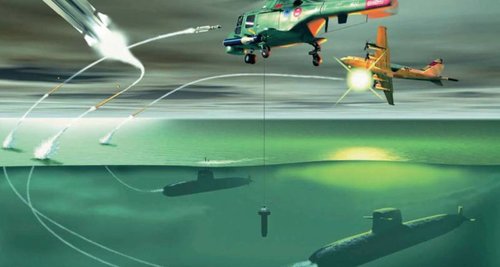
the hard part is in detecting a weak signal in a very short period of time (time of overflight). Imagine then that this weak signal dissipate with altitude. The higher you get the more spread it is. You then have traded a problem of short intensity burst detection with that of detecting that signal over a large area. Obviously, you are not going to use that information for direct targeting but to track the general pattern and know accurately where to drop your sensor to close-in.Moreover, I would not be surprised to hear that MAD sensors have migrated to space.
I would. It's hard enough to do effective MAD localization at hundreds of feet, much less hundreds of miles.
Last edited:
- Joined
- 9 October 2009
- Messages
- 21,129
- Reaction score
- 12,215
P-1 has a MAD boom. P-8 needs a drone to do a MAD search.Still not getting any indication of why a P-1 is any better than a P-8...
View attachment 640844
Funny how the operators of the P-8, other than India all seem to not care...I wonder why? Probably because they know more...
The original plan for the USN P-8 fleet was to have them equipped with expendable MAD sensor drones among other things, but that has long since become vapourware. The RAF was interested in an integral MAD capability for their P-8s, but they were ignored in order to save a few pennies (there was some talk of supplementing the RAF's P-8s with 'low cost' land based drones with MAD capability, but that is all that it seems to have been, talk). With regards as to the P-8I's MAD system, that was supposed to remain in testing until around November of this year AFAIK, though it is quite possible they moved up that because of ongoing tensions with the PRC.
marauder2048
"I should really just relax"
- Joined
- 19 November 2013
- Messages
- 3,157
- Reaction score
- 911
P-1 has a MAD boom. P-8 needs a drone to do a MAD search.Still not getting any indication of why a P-1 is any better than a P-8...
View attachment 640844
Funny how the operators of the P-8, other than India all seem to not care...I wonder why? Probably because they know more...
The original plan for the USN P-8 fleet was to have them equipped with expendable MAD sensor drones among other things, but that has long since become vapourware.
AFAIK, the HAASW UTAS effort is still, like HAAWC, ongoing for the P-8.
Is the vaporwave remark tongue-in-cheek because they intended to use atomic vapor magnetometers?
apparition13
I really should change my personal text
- Joined
- 27 January 2017
- Messages
- 533
- Reaction score
- 953
That's a bit too nested, I'll reply this way.Comments in response in green bold
*snip*
You said you wanted reasons, no one replied. You asked again, no one replied again, so since I get frustrated when my questions get ignored I thought I'd give some reasons I prefer the P-1.
I'll respond to a couple of specific points.
Four engines vs. two: high altitude, who cares. Flying at 3000 feet in bird-air, might become relevant. Which would you rather be in when you lose an engine to a bird-strike: the aircraft designed to fly and fight with three engines or the the one with the interesting handling and power issues now that it's down to one? Which is more likely to recover when an engine barbeques a pelican at 3000 feet and which more likely to decide to try fishing pelican style by diving in?
High vs high and low: new CONOPS for P-8 and high level ASW? Cool. But why throw out decades of experience and institutional knowledge on low level ASW? You're betting on high altitude ASW, what if it doesn't work out? With the P-1 you have the option of going high or low, you can vary your tactics, you can use all that built up ASW knowledge, AND use the new high altitude tactics as well. Without worrying about whether the aircraft is properly stressed for extended low level operations. If the Indians are really planning on doing significant time low and slow, we'll find out how the P-8 does soon enough. Interesting that no one else seems keen to try though.
Radars: which is more useful to you, supplementing your AWACS and AEW aircraft, or ground radar? If you're an island nation, or have bases on a lot of islands, I think having patrol aircraft that can multi-role by also monitoring airspace might prove a useful capability for your MPAs to have. Japan has 4 AWACS and 14 E2s, that isn't enough to cover their entire airspace 24/7 in a crisis. A hundred MPAs that can supplement those AEW assets with their own air search radars could prove pretty useful. And if it's useful for Japan, why not the UK, or Australia, or NZ, or for that matter the US and it's massive coastline and island bases? P-8s with ground search radar might be useful in Afghanistan, or the Fulda Gap, but in the Pacific? AEW seems much more useful. And P-1 does have an integral AESA, rather than a large, draggy, heavy, payload reducing AESA radar pod. Personally I'd like to have both capabilities, but if I have to choose I'll take AEW over ground, and integral over massive pod.
Payload: peacetime, it doesn't matter how often they are loaded for bear. Wartime - it's a bit relevant. The P-8 can carry 4 harpoons on external pylons, none internally. For comparison, the aircraft they were both built to replace, the Lockheed P-7, was supposed to carry 12 on wing pylons. The P-3 has eight wing pylons. Even if it can't carry any internally (the bomb bay is bigger, but I don't know if it's long enough), that's still double the P-8. MPAs are also expected to do SUW, and while 8 (perhaps more) isn't as good as the P-7s 12, it's better than 4. It also means more torps for ASW, more mines for aerial minelaying, etc. When has "and we carry less stuff that goes boom" ever been a selling point for combat aircraft?
Aesthetics: you did see the smiley face, right? That's an indication not to take it too seriously. Besides, it's pretty when it flies:
aonestudio
I really should change my personal text
- Joined
- 11 March 2018
- Messages
- 2,851
- Reaction score
- 7,019
Generally speaking, they look like thy would be for some fairly robust satcom.
Any chance of them being antennas to send out jamming signals to satellites high above?
" The Kawasaki Heavy Industries P-1, one of the only two jet-powered maritime patrol aircraft in production globally, faces an uncertain future after the publication of Japan’s Defense Buildup Program in December. Extraordinary cost growth appears to be a factor that is putting Kawasaki Heavy... (the rest behind the paywall) "
https://aviationweek.com/defense-sp...pan-second-guess-p-1-maritime-patrol-aircraft

https://aviationweek.com/defense-sp...pan-second-guess-p-1-maritime-patrol-aircraft
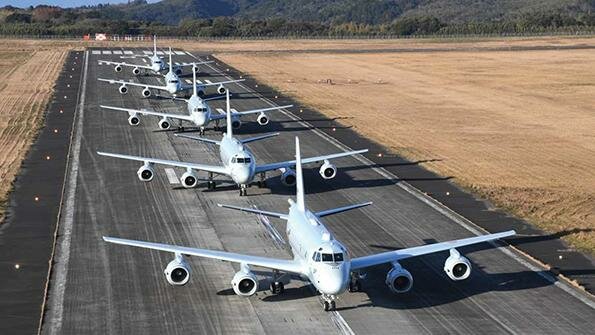
This has been covered in Japanese sources. Basically the number of P-1s will be cut by single digits which will still leave the total built to be ~70 airframes. Also existing airframes will be upgraded, so it's not really that big of a blow. Also the cut P-1s will be replaced by UAVs likely MQ-9B the JCG is using. Chances are the contract will be given to KHI too which doesn't really affect KHI's bottom line.
This has been covered in Japanese sources. Basically the number of P-1s will be cut by single digits which will still leave the total built to be ~70 airframes. Also existing airframes will be upgraded, so it's not really that big of a blow. Also the cut P-1s will be replaced by UAVs likely MQ-9B the JCG is using. Chances are the contract will be given to KHI too which doesn't really affect KHI's bottom line.
Can you please post URL links to those Japanese sources?
This has been covered in Japanese sources. Basically the number of P-1s will be cut by single digits which will still leave the total built to be ~70 airframes. Also existing airframes will be upgraded, so it's not really that big of a blow. Also the cut P-1s will be replaced by UAVs likely MQ-9B the JCG is using. Chances are the contract will be given to KHI too which doesn't really affect KHI's bottom line.
Can you please post URL links to those Japanese sources?

【別表】自衛隊の部隊や装備などの整備計画:朝日新聞デジタル
岸田政権が閣議決定した安保関連3文書に盛り込まれた、部隊や装備などの整備計画は以下の通り。 3文書は、外交や防衛などの指針である「国家安全保障戦略」のほか、防衛の目標や達成する方法を示した「国家防衛…
- Joined
- 29 November 2010
- Messages
- 1,730
- Reaction score
- 3,363
is there any export potential for the P-1? or does the P-8s existence puts it to nil?
- Joined
- 29 September 2006
- Messages
- 1,692
- Reaction score
- 1,172
P-1 was touted to the UK, but lost to the P-8.is there any export potential for the P-1? or does the P-8s existence puts it to nil?
Hard to see who’s left in the game, P-8 seems to have picked all the low-hanging fruit. Taiwan and SK have P-3s, but would likely go for the P-8, as likely would Canada - though I could see 4 engines being attractive for them, given the size of the country and their wide maritime area.
- Joined
- 6 September 2006
- Messages
- 4,596
- Reaction score
- 8,553
Nil sadly. Just too many Japanese-specific systems aboard.
There was talk of swapping out stuff for more international kit in order to attract sales but it doesn't seem to have gotten anywhere. An export customer would end up footing the revalidation costs no doubt and that's unattractive. The P-8 seems to have the segment to itself.
There was talk of swapping out stuff for more international kit in order to attract sales but it doesn't seem to have gotten anywhere. An export customer would end up footing the revalidation costs no doubt and that's unattractive. The P-8 seems to have the segment to itself.
Similar threads
-
-
-
Hundreds of new Life Magazine unpublished photos on Google Cultural Institute
- Started by bercr
- Replies: 24
-
Brazilian Air Force receives updgraded C-95 and P-95 Embraer Bandeirante models
- Started by cluttonfred
- Replies: 0
-

